Best Platforms for Automating Customer Service Responses 2025
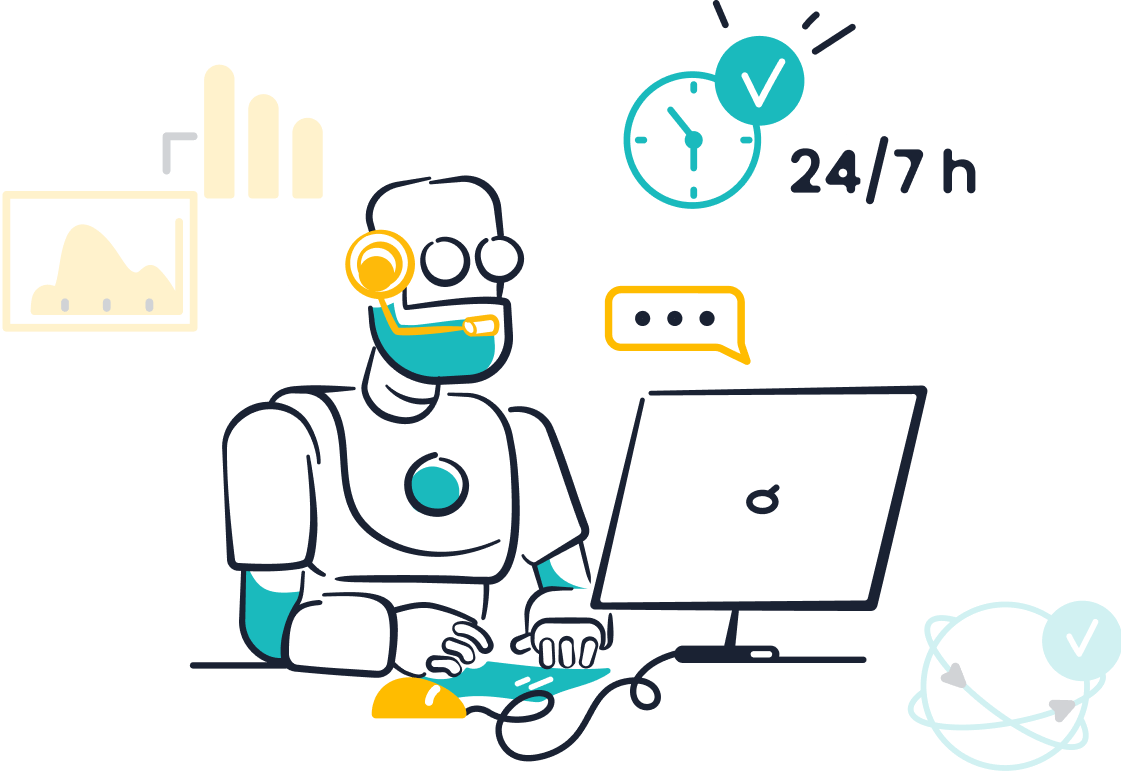
In 2025, platforms like Sobot, Freshdesk, Zendesk, Tidio, and Intercom are transforming how businesses handle customer support. Automation plays a vital role in this shift, enabling faster and more efficient responses. For instance, 85% of consumers expect short wait times, while the benchmark for live chat support is just 58 seconds. Automation ensures 97% of conversations get resolved without needing a live agent, boosting customer satisfaction. Sobot stands out with its AI-powered chatbot, which improves productivity by 70% and reduces costs by 50%. By adopting automation, you can streamline operations and deliver exceptional customer service response templates.
What is Customer Service Automation?
Definition of Customer Service Automation
Customer service automation refers to the use of technology to handle customer inquiries and support tasks without human intervention. It includes tools like AI chatbots, automated ticketing systems, and self-service portals. These solutions streamline customer support by resolving repetitive queries and providing instant responses. For example, Sobot's AI-powered chatbot operates 24/7, offering multilingual support and reducing the need for live agents. Automation ensures faster resolutions, enhancing the overall customer experience.
Importance of Automation in Customer Support
Automation plays a crucial role in improving customer support. It allows you to handle high volumes of customer inquiries efficiently. Studies show that 71% of customers prefer bots for faster query resolution. Virtual agents also provide 24/7 support, meeting the expectations of 72% of customers who want responses within 30 minutes. By automating repetitive tasks, your team can focus on complex issues, leading to a 94% increase in productivity. Additionally, automation reduces costs by up to 40%, making it a cost-effective solution for customer service management.
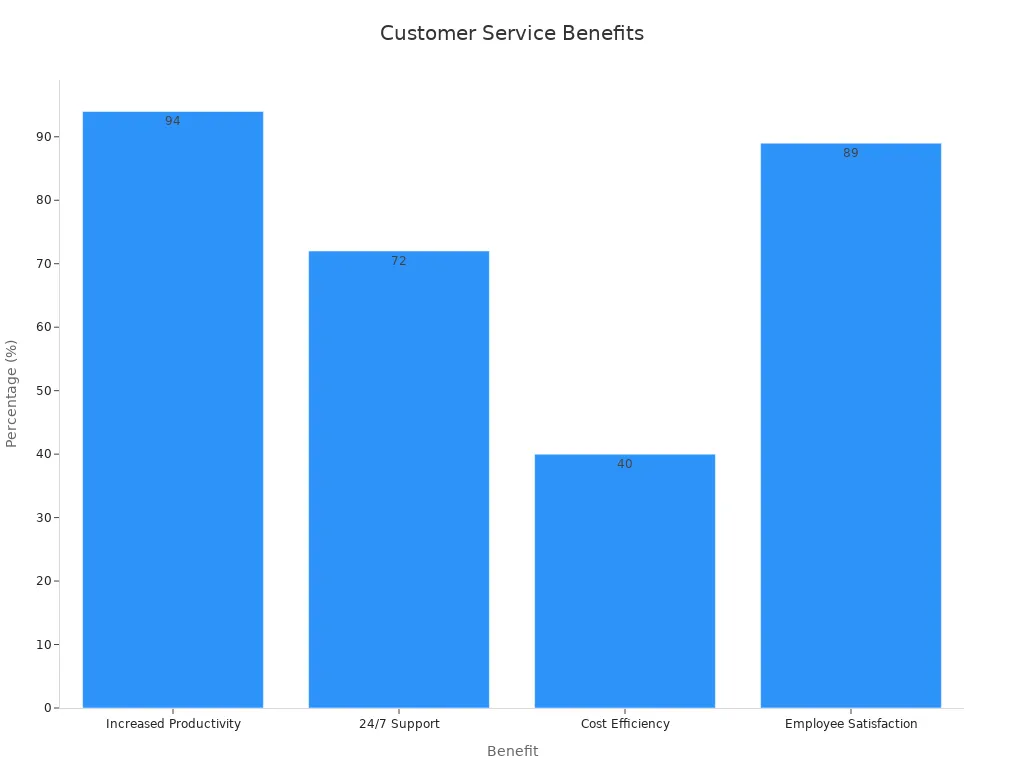
Common Applications of Customer Service Automation
Automation enhances various aspects of customer support. Here are some common applications:
- AI Chatbots: These handle FAQs, provide instant replies, and guide customers through processes. Sobot's chatbot, for instance, improves productivity by 70% and boosts customer engagement with proactive messaging.
- Omnichannel Support: Automation integrates multiple communication channels, ensuring seamless cx. Sobot's omnichannel solution allows you to manage customer inquiries from platforms like WhatsApp and email in one workspace.
- Customer Feedback Collection: Automated surveys help gather insights to improve customer satisfaction.
- Ticketing Systems: These streamline issue tracking and resolution, reducing response times.
By adopting these applications, you can enhance customer engagement, improve cx, and achieve higher customer satisfaction.
Key Features to Look for in Customer Service Response Templates
AI-Driven Responses and Chatbots
AI-driven responses and chatbots are essential for modern customer service response templates. These tools leverage artificial intelligence to provide instant, accurate replies to customer inquiries. Metrics like Customer Satisfaction Score (CSAT) and Intent Recognition Accuracy (IRA) highlight their effectiveness. For example:
| Metric | Description |
|---|---|
| Customer Satisfaction Score (CSAT) | Measures customer satisfaction through post-interaction surveys, indicating how well the AI resolves queries. |
| First Response Time (FRT) | The time taken for the first response from the AI, reflecting service quality and customer care. |
| Intent Recognition Accuracy (IRA) | The ability of the AI to understand customer intent, impacting the relevance of responses. |
Sobot's AI Chatbot exemplifies this feature by autonomously resolving 70% of regular queries, reducing costs by 50%, and boosting conversions by 20%. Its multilingual capabilities and 24/7 availability ensure seamless customer interactions across the globe.
Omnichannel Support for Seamless Customer Interactions
Omnichannel support integrates various communication channels into one unified platform, ensuring customers receive consistent service regardless of their preferred medium. This feature is vital for customer service response templates as it eliminates fragmented communication. Sobot's omnichannel solution allows businesses to manage inquiries from platforms like WhatsApp, email, and SMS in a single workspace. This approach improves agent productivity by 30% and enhances customer satisfaction. A logistics company using omnichannel automation reduced tracking-related inquiries by 20%, showcasing its efficiency.
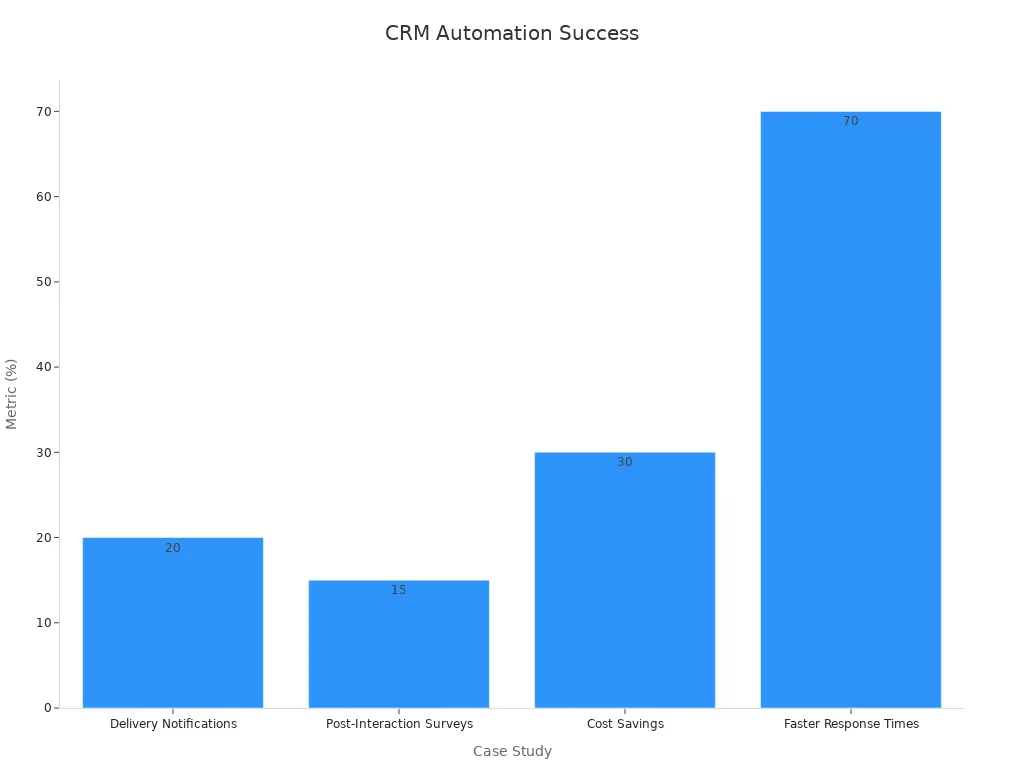
Integration with CRM and Other Tools
Integration with CRM systems and other customer support tools is a game-changer for customer service response templates. It enables businesses to access customer data instantly, personalize interactions, and streamline workflows. For instance, automated delivery notifications integrated with CRM systems reduce customer inquiries by 20%. Sobot's solutions seamlessly connect with platforms like Salesforce and Shopify, ensuring smooth data flow and efficient operations. This integration also supports post-interaction surveys, increasing response rates by 15%.
Personalization is another critical aspect. Studies show that 42% of consumers feel annoyed when content lacks personalization. By integrating CRM systems, you can tailor responses to individual customer needs, enhancing satisfaction and loyalty.
Analytics and Reporting for Performance Insights
Analytics and reporting are essential for understanding and improving your customer service operations. These tools provide valuable insights into performance metrics, helping you identify strengths and areas for improvement. By leveraging analytics, you can make data-driven decisions that enhance efficiency and customer satisfaction.
Real-time analytics allow you to monitor key metrics such as response times, resolution rates, and customer satisfaction scores. For example, Sobot's omnichannel solution includes advanced reporting features that consolidate data from multiple channels. This unified view helps you track performance trends and optimize your support strategies. With these insights, you can allocate resources effectively and ensure your team meets customer expectations.
Automated reporting simplifies the process of gathering and analyzing data. High-performing teams often use automated tools to generate reports and receive real-time notifications. For instance:
- Truecaller’s support team improved efficiency by using automated reports to identify outliers and implement actionable changes.
- A McKinsey survey found that two-thirds of businesses experienced better quality control, higher customer satisfaction, and reduced costs through automation.
Sobot's AI chatbot also provides detailed analytics on customer interactions. These reports help you understand customer behavior, refine chatbot workflows, and improve service quality. By analyzing this data, you can enhance productivity and achieve a 30% boost in operational efficiency.
Incorporating analytics into your customer service automation strategy ensures continuous improvement. It empowers you to make informed decisions, improve team performance, and deliver exceptional customer experiences. With tools like Sobot, you can transform raw data into actionable insights, driving success in your customer support operations.
Top Platforms for Automating Customer Service Responses in 2025

Sobot and Its AI Chatbot
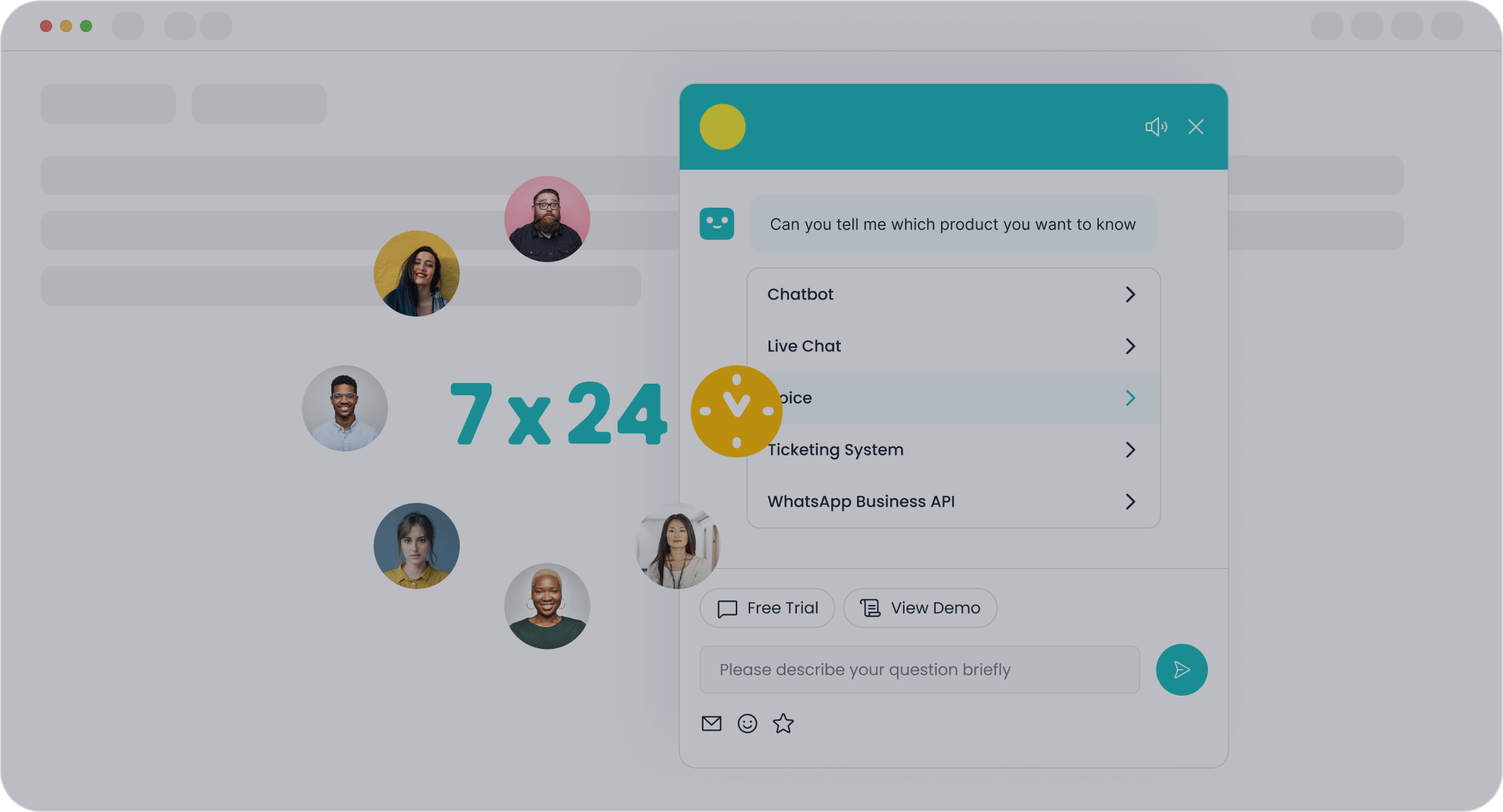
Sobot leads the way in customer support automation with its advanced AI chatbot. This tool transforms how businesses handle customer inquiries by automating repetitive tasks and providing instant, accurate responses. The chatbot operates 24/7, ensuring your customers receive support whenever they need it. Its multilingual capabilities allow seamless communication across different regions, making it ideal for global businesses.
The chatbot's performance metrics highlight its effectiveness. For example:
| Metric | Value |
|---|---|
| Reduction in inbound discussion | 20% |
| Positive feedback rate | 96% + |
| Accuracy of responses | 80% |
| Customer satisfaction (CSAT) | 97% |
| Problem resolution rate | 85% |
| Customer happiness | 99% |
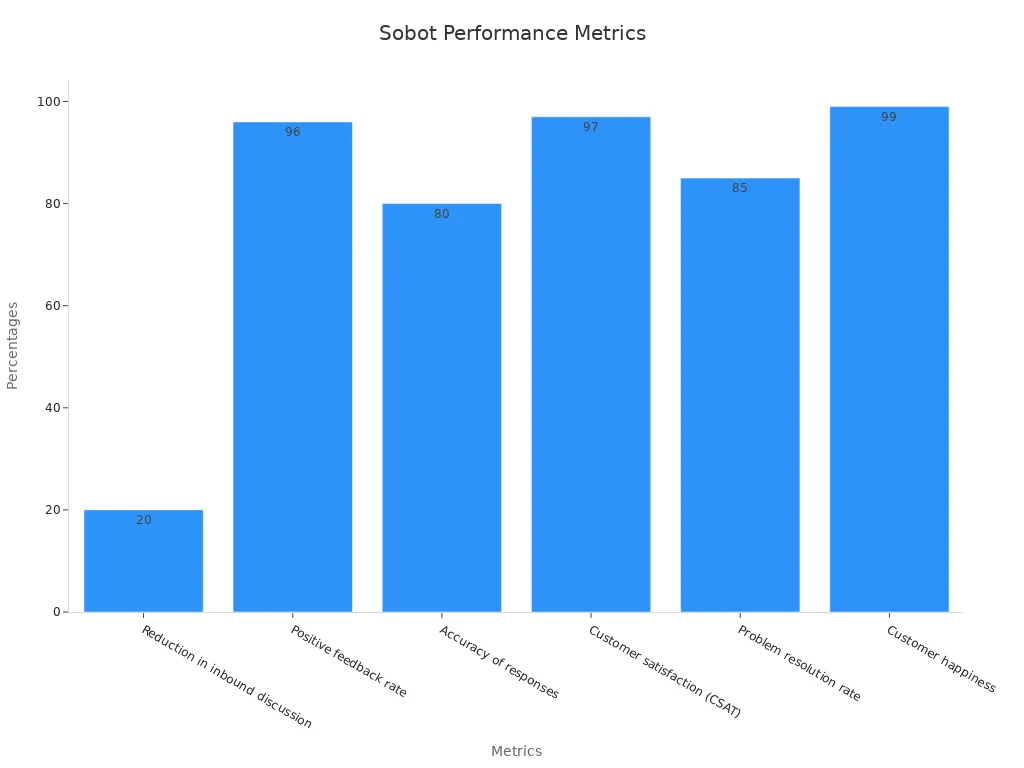
Sobot also integrates seamlessly with CRM systems, enabling personalized interactions and efficient workflows. By using Sobot, you can reduce costs by 50%, improve productivity by 70%, and boost conversions by 20%. These features make Sobot a standout customer support platform for businesses aiming to enhance efficiency and customer satisfaction.
Freshdesk
Freshdesk is another popular customer support platform that focuses on delivering personalized experiences. It offers tools like AI-driven chatbots, ticketing systems, and omnichannel support to streamline customer service operations. Businesses using Freshdesk benefit from improved response times and higher customer satisfaction.
Statistics underline its impact:
- 80% of buyers prefer brands offering personalized customer experiences.
- 63% of consumers expect agents to understand their unique needs.
- Good customer service increases recommendations by 38%.
Freshdesk's automation tools help businesses meet these expectations. For instance, its AI chatbots handle routine inquiries, freeing agents to focus on complex issues. This approach not only enhances efficiency but also reduces operational costs. Freshdesk remains a reliable choice for businesses seeking a robust customer support platform.
Zendesk
Zendesk has earned its reputation as a trusted customer support platform by enhancing operational efficiency and customer satisfaction. Its AI tools automate routine tasks, allowing your team to focus on more critical issues. Zendesk also provides self-service options, empowering customers to resolve their queries independently.
Reports confirm its effectiveness. Nucleus Research highlights how Zendesk improves response times and boosts agent productivity. A blog post emphasizes that businesses using Zendesk often exceed customer satisfaction goals. Additionally, SMB Champions leveraging Zendesk view their support teams as a competitive advantage, with many reporting growth in their customer base.
Zendesk's ability to streamline processes and deliver exceptional customer experiences makes it a strong contender in the customer support automation space.
Tidio
Tidio is a powerful platform for automating customer service responses, offering tools that simplify communication and enhance efficiency. Its AI chatbots use advanced natural language processing (NLP) and deep learning to understand customer context, ensuring accurate and relevant replies. This feature allows you to provide instant support while maintaining a personalized touch.
Setting up Tidio is straightforward. The drag-and-drop builder lets you create chatbot scenarios without technical expertise. You can choose from over 30 pre-designed templates to address common customer queries. Additionally, Tidio supports multichannel communication, integrating seamlessly with messaging apps, Shopify, and MailChimp. This ensures you can manage all customer interactions from a single platform.
Here are some key features and statistics that highlight Tidio's capabilities:
- AI chatbots resolve up to 70% of customer issues autonomously.
- Visitors’ live view and message preview enhance real-time engagement.
- Canned responses and 16 triggers streamline repetitive tasks.
| Feature/Statistic | Details |
|---|---|
| User Rating | 4.7/5 (1,220+ reviews) |
| AI Chatbot Efficiency | Lyro AI can resolve up to 70% of customer issues. |
| Main Features | AI chatbots with NLP, live view, canned responses, 30+ templates, etc. |
| Integration Options | Deep integrations with Shopify, MailChimp, and social media. |
Tidio’s automation tools not only improve efficiency but also enhance customer satisfaction. For example, its live view feature allows you to monitor visitor activity, enabling proactive engagement. By adopting Tidio, you can streamline your operations and deliver exceptional customer experiences.
Intercom
Intercom stands out as a versatile platform for automating customer service responses. It combines AI-driven tools with human support to create a balanced approach to customer service. Nearly half of support teams already use AI, according to the Intercom Customer Service Trends Report. This adoption highlights the growing reliance on automation to handle high volumes of inquiries.
Intercom’s AI tools resolve 11-30% of customer support volume, allowing your team to focus on complex issues. For instance, Aglet, a popular app, used Intercom’s bots to manage a surge in support queries. This approach ensured efficiency without compromising personalized service.
Key features of Intercom include:
- AI-powered chatbots for instant query resolution.
- Seamless handoff rules for transitioning from bots to live agents.
- Multichannel support for consistent customer experiences.
Intercom’s automation capabilities help you reduce response times and improve customer satisfaction. By integrating AI with human expertise, you can deliver efficient and personalized support, meeting the expectations of modern customers.
Comparison of Customer Service Automation Platforms
Features and Capabilities
When comparing customer service automation platforms, you should focus on features that enhance efficiency and improve customer experiences. Key benchmarks include scalability, customizability, and collaboration tools. For example, Sobot excels in scalability, handling over 6 million online communications daily while maintaining 99.99% system stability. Its AI chatbot operates 24/7, offering multilingual support and reducing repetitive tasks by 70%.
Here’s a quick comparison of essential features across platforms:
| Feature/Aspect | Description |
|---|---|
| Email Marketing Capabilities | Varies in behavioral triggers, A/B testing, and personalization depth. |
| Multi-Channel Orchestration | Includes social media, SMS, web personalization, and voice interactions. |
| CRM Integration | Ranges from native functionality to connectors for systems like Salesforce and HubSpot. |
| Scalability | Ensures tools grow with your business without sacrificing service quality. |
| Collaboration Features | Real-time updates and shared task tracking improve team efficiency. |
Sobot’s omnichannel solution stands out by unifying customer interactions across platforms like WhatsApp, email, and SMS. This integration boosts agent productivity by 30% and ensures seamless customer support.
Pricing Overview
Pricing for customer service automation platforms varies widely. Entry-level solutions start at $200/month, while enterprise options can exceed $4,000/month. Hidden costs, such as add-ons and integrations, often increase the total cost of ownership by 40-60%. Sobot offers transparent pricing with scalable options tailored to your business size and needs. Its solutions provide excellent ROI by reducing operational costs by up to 50% and improving productivity by 70%.
For businesses seeking cost-effective customer support tools, Sobot’s AI chatbot and omnichannel solution deliver high value. These tools not only lower expenses but also enhance customer satisfaction, making them a smart investment.
Best Use Cases for Each Platform
Different platforms excel in specific scenarios. Here are some notable use cases:
| Use Case | Company | Key Outcomes |
|---|---|---|
| Responding to common customer questions | Sephora | Attracted 9,000+ users, facilitated 332,000 conversations, $30,000 monthly revenue. |
| Improving self-service accessibility | IKEA | Increased eCommerce revenue share from 7% to 31% over three years. |
| Hyper-personalization with insights | Starbucks | Enhanced customer satisfaction and operational efficiency. |
| Streamlining omnichannel interactions | Samsung | Achieved 97% customer satisfaction and 30% higher agent efficiency with Sobot. |
Sobot’s solutions are ideal for businesses aiming to unify customer support across channels. For example, Samsung used Sobot to integrate its communication systems, resulting in a 97% satisfaction rate. Whether you need to automate FAQs or manage complex workflows, Sobot provides versatile tools to meet your needs.
How to Choose the Right Platform for Customer Support
Assessing Business Needs and Goals
Choosing the right platform starts with understanding your business needs and goals. Begin by identifying the challenges your customer support team faces. Are you struggling with high inquiry volumes, slow response times, or fragmented communication channels? Knowing your pain points helps you prioritize features like AI chatbots, omnichannel support, or CRM integration.
Next, align your goals with the platform's capabilities. For example, if you aim to improve customer satisfaction, look for tools that offer 24/7 support and personalized interactions. Platforms like Sobot provide AI-driven chatbots that resolve 70% of queries autonomously, boosting efficiency and satisfaction.
Consider your industry and customer expectations. Statistics show that 83% of customers value good service as their top purchase criterion, while 78% will switch brands after multiple bad experiences. A platform that enhances service quality can help you retain customers and build loyalty.
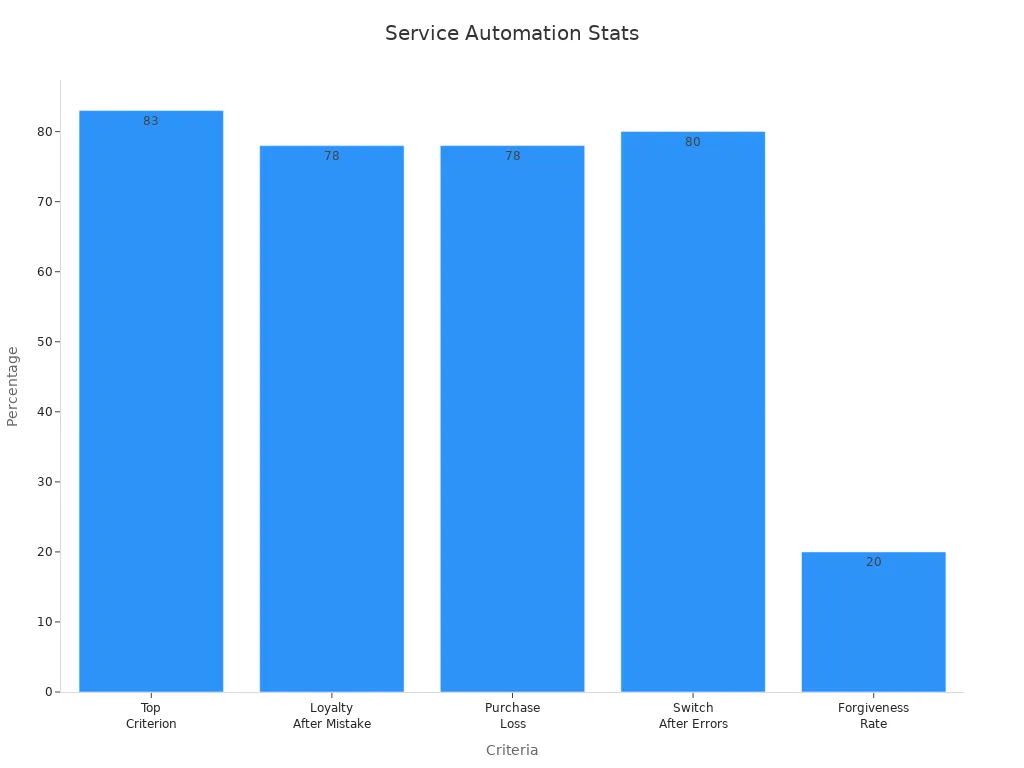
Budget and Cost Considerations
Budget plays a crucial role in selecting customer support tools. Start by estimating costs based on past projects and include all departments to capture hidden expenses. For instance, integrating a platform with existing systems like CRM may incur additional costs.
Evaluate the long-term value of the investment. Automation reduces operational costs by up to 50%, as seen with Sobot's AI chatbot. It also improves productivity by 70%, offering a strong return on investment.
| Aspect | Description |
|---|---|
| Systematic Collection | Use financial data from past projects to estimate costs. |
| Broad Scope | Include input from all departments to identify hidden costs. |
| Identifying Hidden Costs | Prepare for expenses like integrations and training. |
| Evaluating Long-Term Value | Assess how the platform will benefit your business over time. |
By considering both upfront and long-term costs, you can choose a platform that fits your budget while delivering measurable benefits.
Scalability and Future Growth Potential
Scalability ensures the platform grows with your business. The customer service automation market is projected to expand from $3.5 billion in 2023 to $15.8 billion by 2032, with a CAGR of 18.5%. This growth reflects advancements in AI and the rising demand for omnichannel solutions.
Look for platforms that adapt to increasing customer inquiries and integrate with new technologies. Sobot, for example, handles over 6 million online communications daily while maintaining 99.99% system stability. Its omnichannel solution supports various channels like WhatsApp and email, ensuring seamless scalability.
- Rapid advancements in AI and ML enable sophisticated tools.
- Digital transformation drives businesses to adopt automated solutions.
- Omnichannel support meets customer expectations for consistent service.
A scalable platform prepares your business for future challenges, ensuring you stay competitive in a growing market.
Benefits of Automating Customer Service Responses

Faster Response Times and Improved Efficiency
Automation significantly reduces the time it takes to respond to customer inquiries. Tools like AI chatbots can provide instant replies, ensuring your customers never have to wait. For example, platforms using Natural Language Processing (NLP) techniques deliver human-like responses, which improve customer experience and satisfaction. Metrics such as Average Response Time and First Contact Resolution Rate demonstrate the efficiency of automation. Faster response times not only enhance customer satisfaction but also allow your team to handle more queries in less time.
Sobot's AI chatbot exemplifies this benefit by autonomously resolving 70% of routine queries. It operates 24/7, ensuring your customers receive support whenever they need it. This level of efficiency enables your team to focus on complex issues, improving overall productivity. Businesses leveraging automation often report a 37% reduction in first response time and a 52% decrease in resolution time, showcasing its transformative impact.
Enhanced Customer Satisfaction and Loyalty
Automating customer support leads to higher satisfaction levels and stronger customer retention. Automated systems provide consistent, accurate, and personalized responses, which build trust and loyalty. Studies show that businesses using AI-based customer support tools experience a 1% increase in customer satisfaction scores and a 36% rise in repeat purchases. These improvements directly contribute to better customer retention.
Sobot's omnichannel solution enhances customer experience by unifying interactions across platforms like WhatsApp and email. This seamless integration ensures your customers receive consistent service, regardless of the channel they use. Additionally, sentiment analysis tools can proactively address complaints, preventing issues from escalating. By adopting automation, you can create a positive and lasting impression on your customers.
Reduced Operational Costs
Automation reduces the need for manual intervention, leading to significant cost savings. For instance, robotic process automation (RPA) in claims processing has saved companies millions annually by resolving issues faster. Businesses using automation report an average cost reduction of 23%, according to the International Journal of Information Management. In the healthcare sector, AI integration is expected to save $200-$360 billion annually.
Sobot's AI chatbot helps you cut costs by triaging queries 24/7, eliminating the need for additional agents. This approach can save up to 50% on operational expenses. By automating repetitive tasks, your team can focus on high-value activities, further optimizing resources. These savings allow you to reinvest in other areas, driving growth and innovation.
Increased Productivity for Support Teams
Automation has revolutionized how support teams operate, enabling them to achieve higher productivity levels. By automating repetitive tasks, you can free up your team to focus on more complex customer support issues. This shift not only enhances efficiency but also improves customer satisfaction by ensuring faster and more accurate responses.
One of the key benefits of automation is the measurable improvement in productivity. For example, metrics like "Productivity per Engineer" and "Time Saved Through Automation" reveal how automation optimizes workflows. Here's a breakdown of these metrics:
| Metric | Definition | Business Impact | Quantification |
|---|---|---|---|
| Productivity per Engineer | Measures the amount of work an engineer can complete with automation. | Helps quantify improvements in productivity due to automation. | Productivity = Output per engineer / Number of engineers |
| Cost Reduction Due to Automation | Financial savings from reducing manual labor and errors via automation. | Directly reduces operational expenses by minimizing the need for external services. | Managed Service Cost Reduction = Cost of pre-orchestration services - Cost of post-orchestration services |
| Time Saved Through Automation | Amount of time saved from implementing automation in processes. | Faster time to market for new services, improving customer satisfaction. | Time Savings = (Manual deployment time - Automated deployment time) / Manual deployment time * 100 |
| Error Reduction Rate | Decrease in errors in processes due to automation. | Reduces compliance risks and ensures regulatory adherence. | Compliance Rate = (Automated compliance actions / Total compliance actions) * 100 |
Sobot's AI chatbot exemplifies how automation boosts productivity. It autonomously resolves 70% of routine queries, allowing your team to handle more inquiries without additional resources. This efficiency translates into significant time savings and cost reductions, enabling your business to allocate resources more effectively.
Moreover, automation tools like Sobot's omnichannel solution unify customer interactions across platforms such as WhatsApp and email. This integration streamlines workflows, reducing the time agents spend switching between systems. As a result, your team can respond to customer support requests faster, improving overall customer satisfaction.
By adopting automation, you empower your support team to work smarter, not harder. This approach not only enhances productivity but also ensures your customers receive the high-quality service they expect.
Trends in Customer Service Automation for 2025
Advancements in AI and Machine Learning
AI and machine learning are reshaping customer support by enabling smarter, faster, and more accurate responses. These technologies allow you to automate repetitive tasks, analyze customer behavior, and predict future needs. For example, 73% of shoppers believe AI improves their experience, while 80% of customers report positive interactions with AI-powered tools. Businesses offering excellent customer experiences grow revenues 4%-8% faster than their competitors.
Generative AI is expected to play a significant role in 2025. By automating complex workflows, it enhances agent productivity and customer satisfaction. Tools like Sobot's AI chatbot leverage machine learning to resolve 70% of routine queries autonomously, saving time and reducing costs. This innovation ensures your team can focus on high-value tasks, improving overall efficiency.
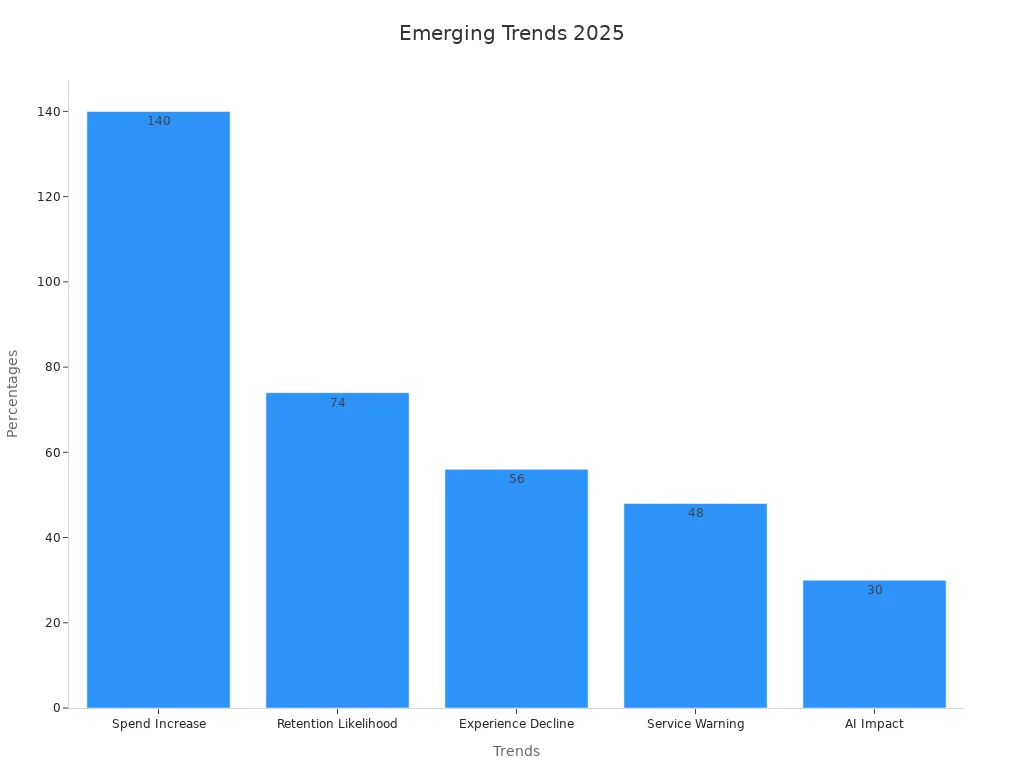
Personalization and Predictive Analytics
Personalization and predictive analytics are transforming how you engage with customers. By analyzing historical data, predictive tools forecast customer needs, enabling proactive support. For instance, 91% of consumers prefer brands that recognize their preferences and offer relevant solutions. This approach not only improves satisfaction but also builds loyalty.
Sobot's omnichannel solution integrates predictive analytics to deliver personalized experiences across platforms like WhatsApp and email. It helps you understand customer behavior, anticipate needs, and provide tailored responses. Businesses using these tools often see a 30% reduction in complaint escalation rates and a significant boost in customer retention.
| Source | Evidence |
|---|---|
| Wizr AI | Predictive analytics identifies patterns and forecasts customer needs. |
| HashStudioz | Personalization enhances real-time customer engagement. |
| Accenture | 91% of consumers prefer brands offering relevant, personalized offers. |
Focus on Omnichannel Customer Support
Omnichannel strategies ensure seamless customer interactions across multiple platforms. Customers expect consistent service whether they contact you via email, social media, or live chat. Metrics like customer satisfaction, resolution times, and response rates highlight the importance of this approach.
Sobot's omnichannel solution unifies customer interactions into a single workspace, improving efficiency by 30%. It eliminates communication gaps, ensuring your customers receive timely and accurate responses. For example, a logistics company using omnichannel automation reduced tracking-related inquiries by 20%, showcasing its effectiveness.
- Customers prefer contacting businesses through their preferred methods.
- Rapid responses enhance satisfaction and loyalty.
- Unified communication channels prevent disconnects and improve experiences.
By adopting omnichannel customer support tools, you can meet rising expectations and deliver exceptional service.
Customer service automation has become essential for businesses aiming to deliver faster, more efficient support. Platforms like Sobot lead the way by offering AI-powered tools that reduce handling times, improve first-contact resolution rates, and enhance customer satisfaction. For example, Sobot’s chatbot operates 24/7, cutting costs by 50% and boosting productivity by 70%.
| Key Benefits of Automation Platforms | Impact on Customer Service |
|---|---|
| AI reduces agents’ workloads and improves operational efficiency. | Prevents burnout and ensures agents focus on complex issues. |
| Intelligent, connected experiences anticipate customer needs. | Builds loyalty and streamlines interactions. |
| Better self-service tools enhance customer satisfaction. | Reduces effort required to resolve issues, fostering long-term trust. |
By adopting platforms like Sobot, you can streamline operations, reduce costs, and create exceptional customer experiences. Explore these tools to stay ahead in the evolving customer service landscape.
FAQ
What is customer service automation, and why is it important?
Customer service automation uses tools like AI chatbots and ticketing systems to handle inquiries without human intervention. It improves efficiency, reduces costs, and enhances customer satisfaction. For example, Sobot's AI chatbot resolves 70% of routine queries autonomously, saving time and boosting productivity.
How does an AI chatbot improve customer support?
AI chatbots provide instant, accurate responses 24/7. They handle repetitive tasks, allowing your team to focus on complex issues. Sobot's chatbot, for instance, improves productivity by 70% and reduces costs by 50%, making it a valuable tool for customer service automation.
What is omnichannel support, and how does it benefit businesses?
Omnichannel support integrates communication channels like email, WhatsApp, and SMS into one platform. It ensures consistent service across all channels. Sobot's omnichannel solution boosts agent productivity by 30% and enhances customer satisfaction by unifying interactions in a single workspace.
Can automation reduce operational costs?
Yes, automation significantly reduces costs by minimizing manual tasks. Sobot's AI chatbot operates 24/7, triaging queries without additional agents. This approach saves up to 50% on operational expenses, making it a cost-effective solution for businesses.
How do I choose the right platform for customer service automation?
Start by assessing your business needs and goals. Look for features like AI-driven chatbots, omnichannel support, and CRM integration. Sobot offers scalable solutions that handle over 6 million communications daily, ensuring efficiency and reliability for growing businesses.
See Also
Best Customer Support Software Options for 2024
Leading Voice of Customer Tools for 2024
Best Cloud Contact Center Solutions Available in 2024
